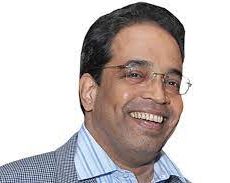Ms. Xie an 86 years old Chinese woman has already prepared the clothes she will be buried in. Xie has an active social life. Yet she has already bought the pants, shirt, shoes, earrings and purse she will wear after she dies, as well as an embroidered yellow pillow for her head. She had a portrait taken that will be displayed at her funeral. And she has wrapped the items neatly in a cardboard box to await her death.
While in West picking out an outfit for your own funeral might seem something of never heard of. But in China it’s a happy thing. Here Everybody does it.
The idea that getting ready for one’s funeral can be ‘a happy thing’ shows just how much ideas of happiness can differ from country to country.
It also suggests that creating a definition of happiness that holds true for people around the world is not as straightforward as it seems. Happyho also provide best tarot reading services in Noida and Delhi NCR India area.
Each year, packs of sociologists and survey workers descend on different countries to ask people about their happiness.
One goal of these surveys is to figure out what ingredients make a happy society. Critics say the measure that most countries use to track progress excludes some of the most important parts of human life.
Often, these surveys suggest that one of the most important components in happiness is actually wealth. Wealthier countries tend to have higher standards of living, better health care and education, cleaner environments, and more support for families than poorer ones do.
According to the U.N.’s World Happiness Report many of the “happiest” countries are more developed ones.
Not only the wealth, happiness surveys also try to capture things that common economic metrics overlook, such as a sustainable environment, social progress, personal growth and self-acceptance.
Still measures of happiness that work equally well in countries all around the world are a Holy Grail for sociologists — sought after, but rarely found.
Critics point out that different surveys tend to produce substantially different, and sometimes surprising, results, and they question whether these measures are really capturing happiness, or something else.
Perhaps the biggest problem is how the concept of ‘happiness’ varies in different cultures and languages.
In English, for example, the word “happy” can refer to different things. It might mean a fleeting mood you feel when someone surprises you with a gift or you think of friends and family. Or it could refer to a deeper and less malleable state of satisfaction with your life.
But not all languages refer to happiness the same way. For example, Denmark is often ranked among the world’s happiest countries, which is something of a mystery to those who have lived among the relatively solemn Danes.
Some researchers say the reason is that happiness in Danish is often translated as lykke: a term that can describe a kind of everyday well-being that might be brought on by a nice cup of coffee or a slice of bread with cheese. Others argue that the Danish results might be due in part to a cultural reluctance to burden strangers with their troubles.
Other studies suggests that German, French, Polish and Russian speakers use their equivalent terms for “happy” or “happiness” to refer to a state that’s much rarer than English or Danish terms. Still other research argues that, in many languages, the term for “happy” involves a much stronger role for luck or fortune than it does in modern English — closer to what “happy” meant in English several centuries ago.
In Chinese, there are actually several different terms for happiness, each of which have a slightly different meaning.
Hsu and her colleagues are carrying out their own happiness survey in China, with the hope of learning how to better measure happiness not just in China, but in other countries, as well. Their survey focuses on three dimensions of happiness — a good mood, a good life and a sense of whether one’s life has meaning.
In Chinese, each of these three kinds of happiness can actually be translated as a different word
xingfu for a good life, you yiyi for meaning and kuaile for a good mood. By using those three words to ask different questions, researchers may be able to measure dimensions of happiness in Chinese that are often brushed over in English.
Another common problem with happiness surveys is that they are heavily influenced by Western social science and particularly economics, which has a relatively individualistic and utilitarian view of human life. For Americans especially, the idea of the pursuit of happiness is often related to personal liberty and individualism.
Western-made surveys tend to ask about the individual person in isolation, and ignore their relationships whereas more and more research today suggests that social relationships are one of the most important factors in a person’s well being.
So Hsu’s surveys have focused much more on social relations — asking people who they ate dinner with last night, whether it was fun, and who they have given money to in the past month.
The research suggests that family is extremely important to happiness in China. Even for young Chinese, whose consumerist tendencies and urban lives look similar to those in the West in other respects.
It might seem strange, but this focus on the family may help explain why Ms. Xie and her friends have such strong feelings about the clothes they will be buried in. Because many Chinese have a strong sense of connection with their family members, even ancestors who have passed on, they have different and less negative attitudes toward death.
That greater sense of connection between living and dead family members is one reason that preparing for burial can be a ‘happy’ event.
Chinese families frequently acknowledge and “interact” with the dead through rituals that give people a sense of closer connection to the deceased.Families visit the tombs of relatives on holidays to pray, and burn paper money, paper clothes, and other things that the dead person “needs” in the afterlife.





